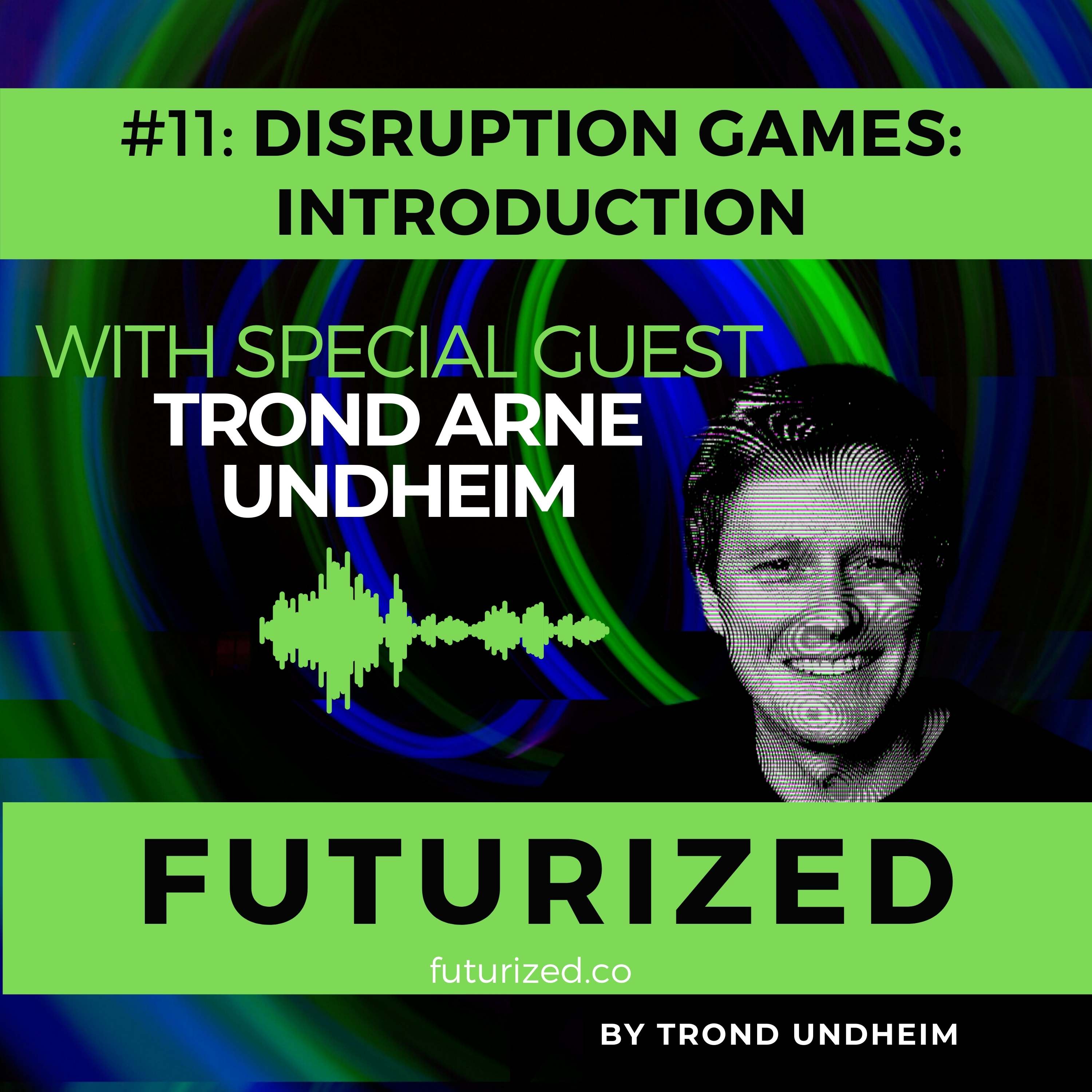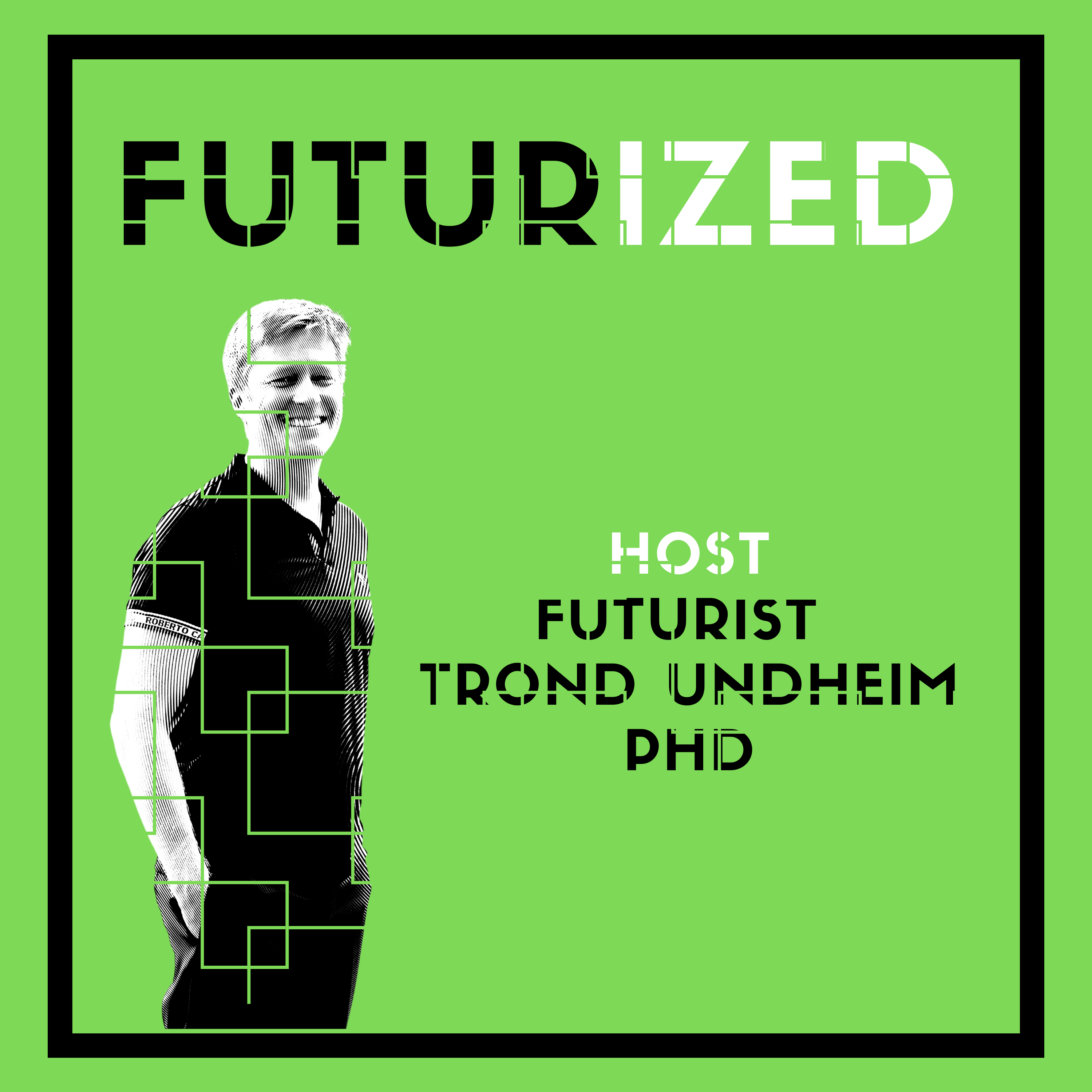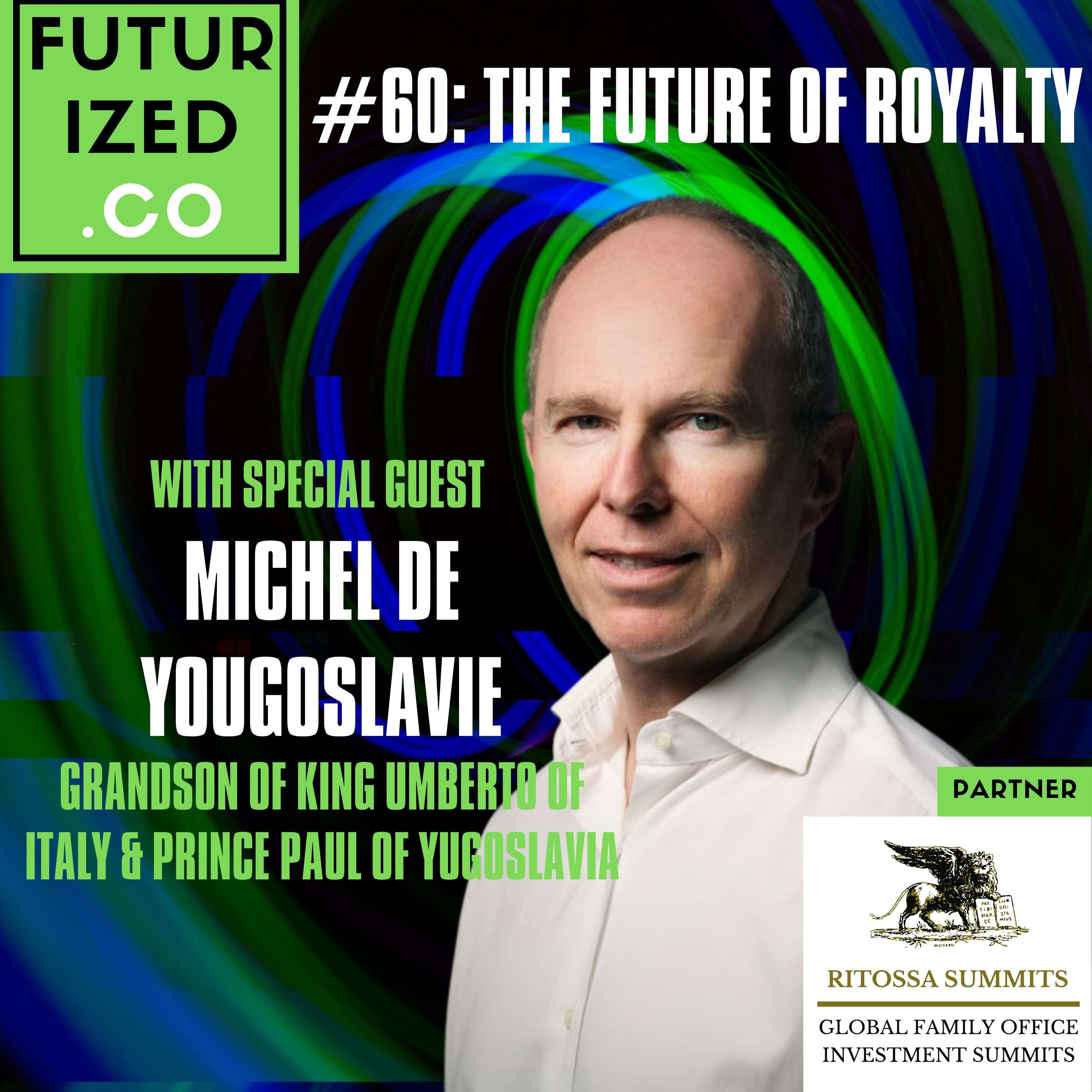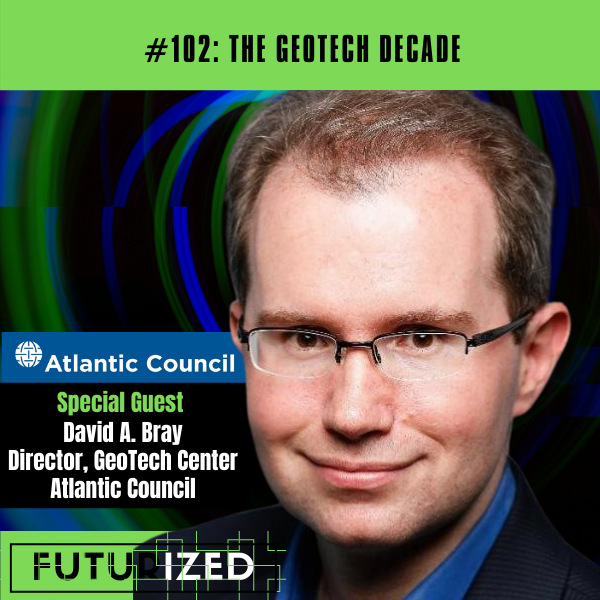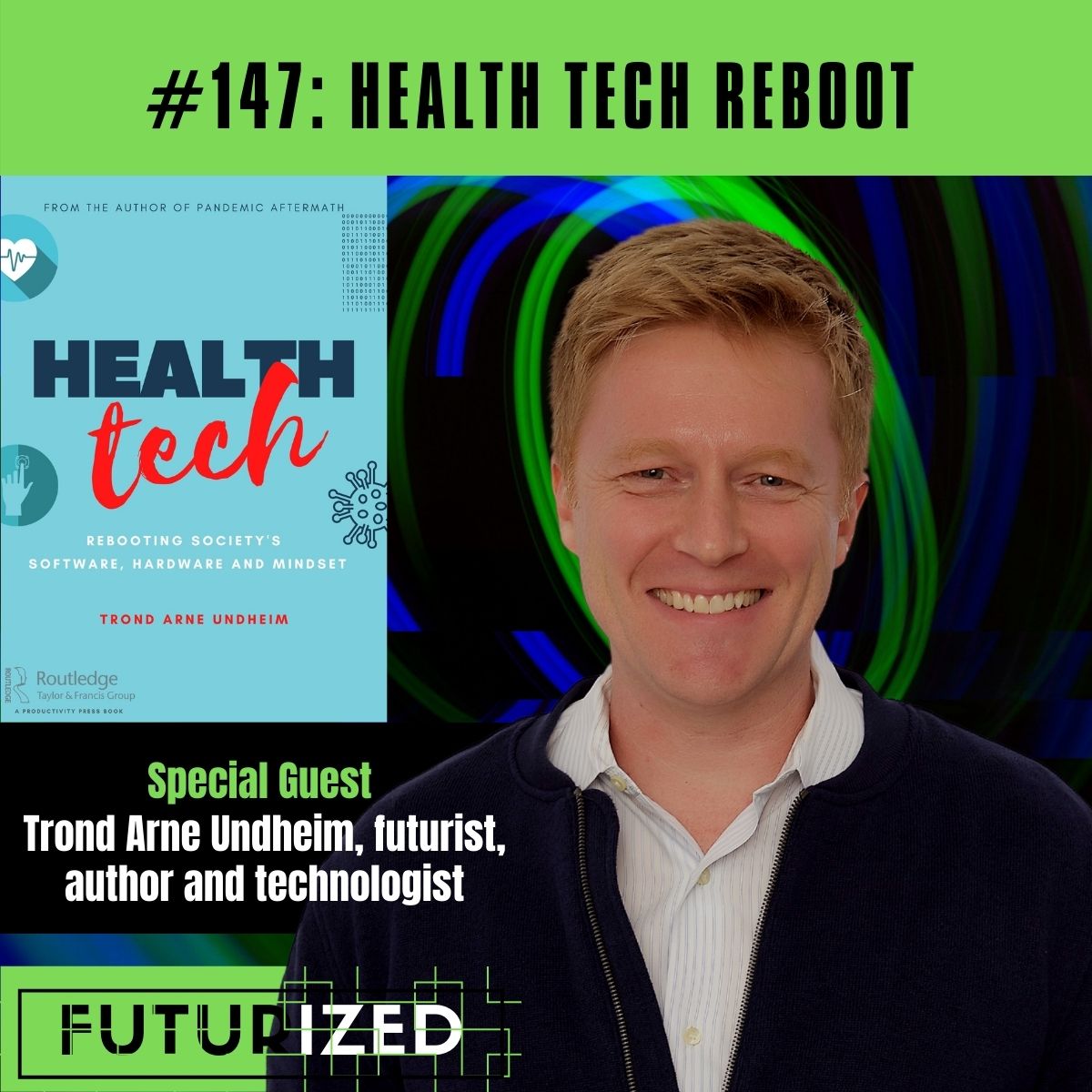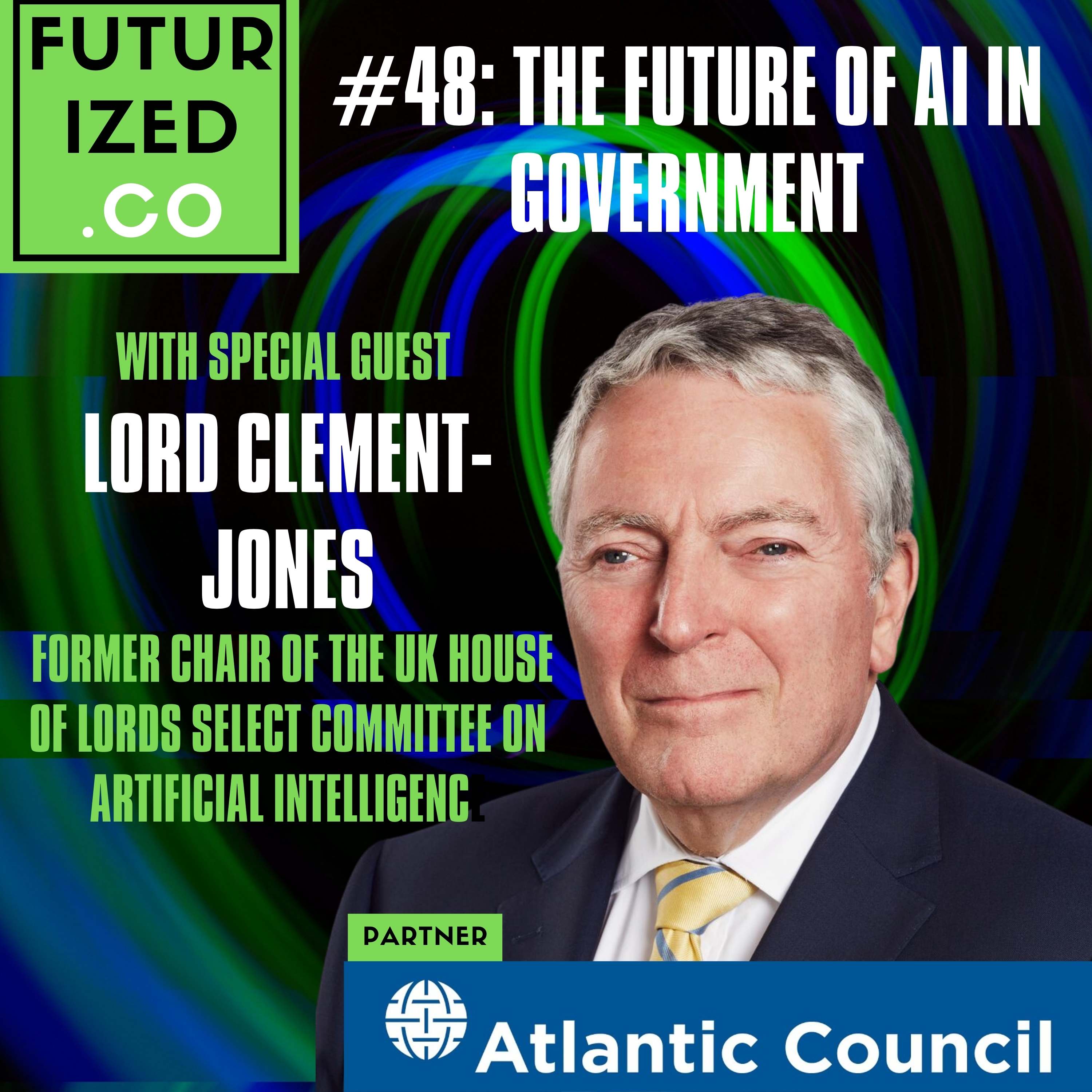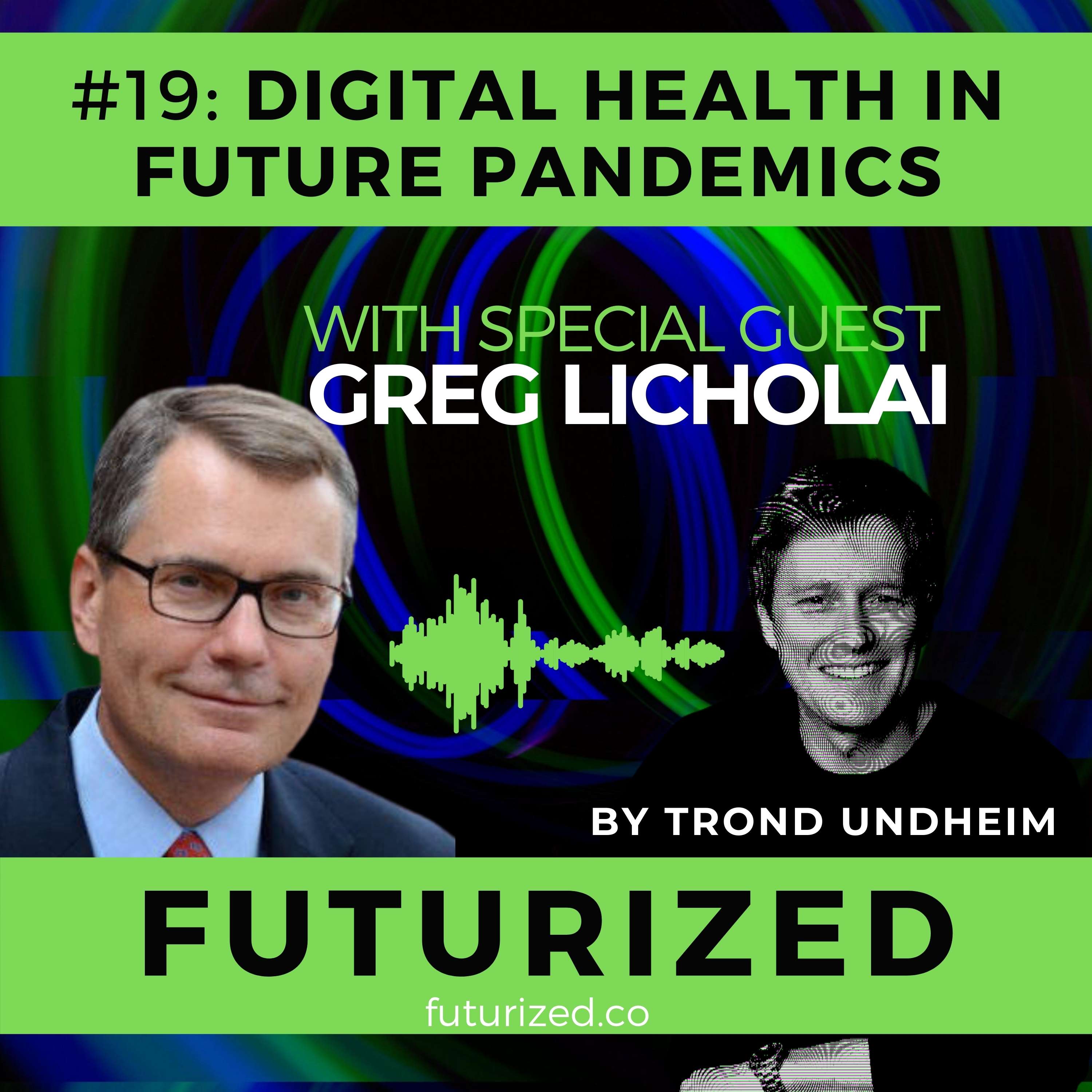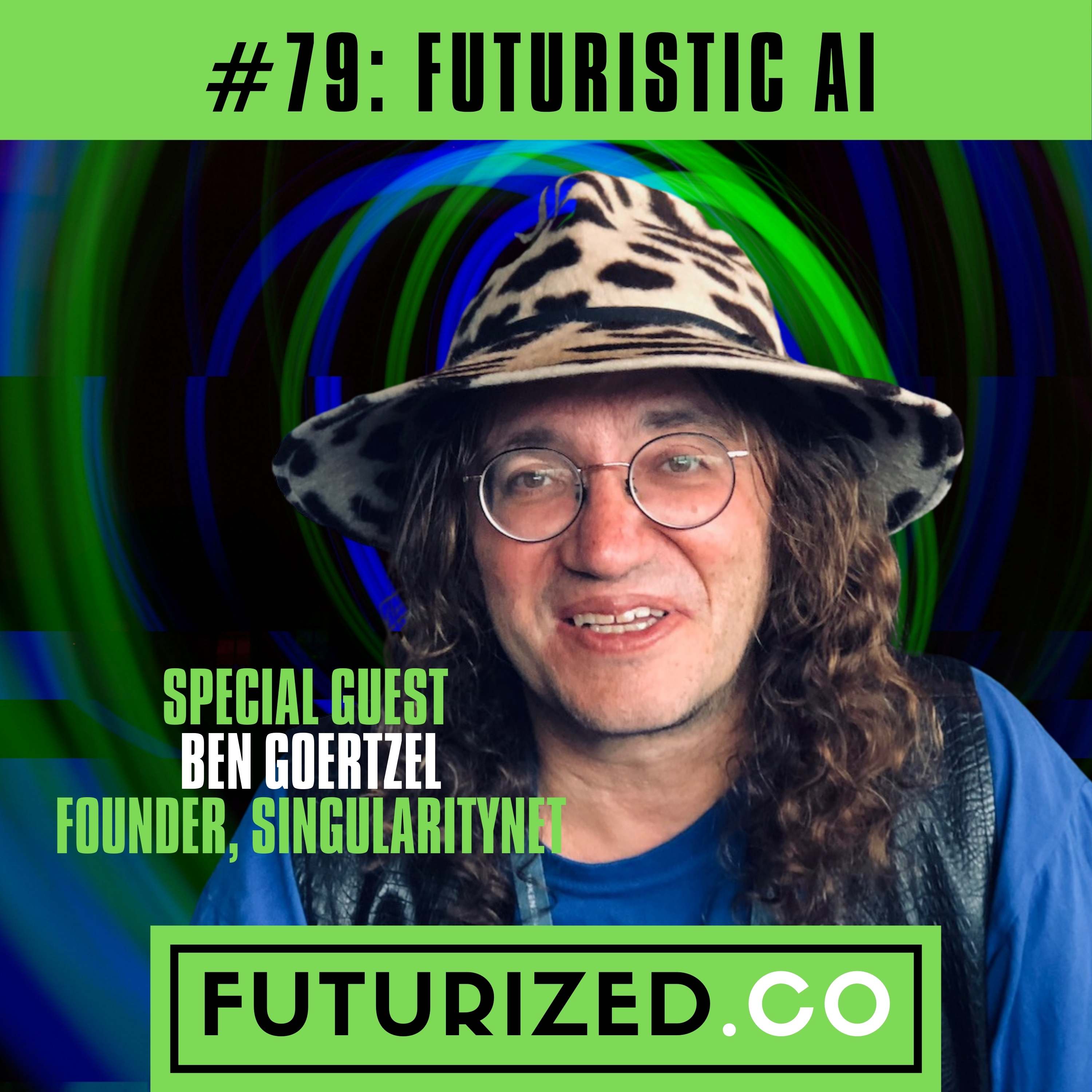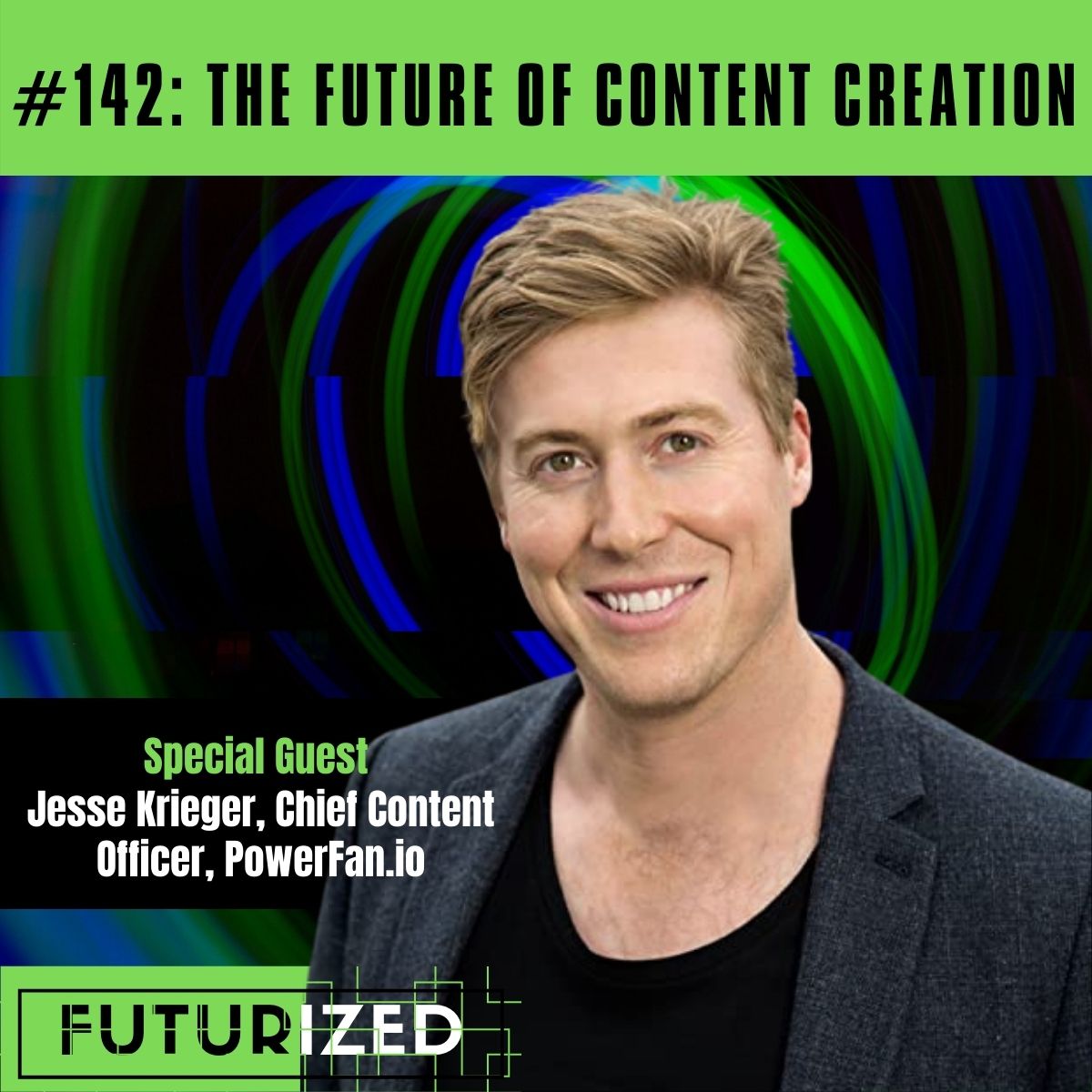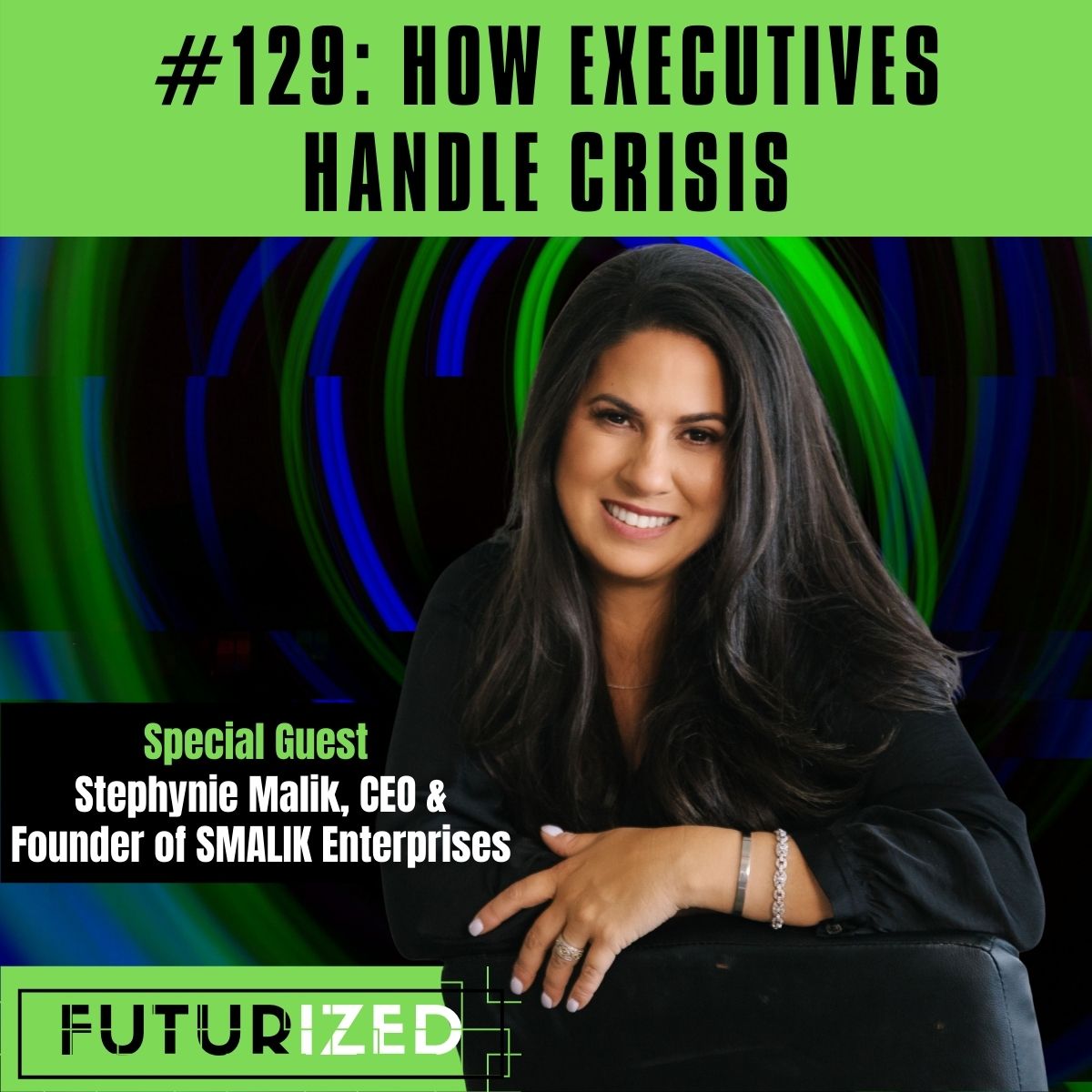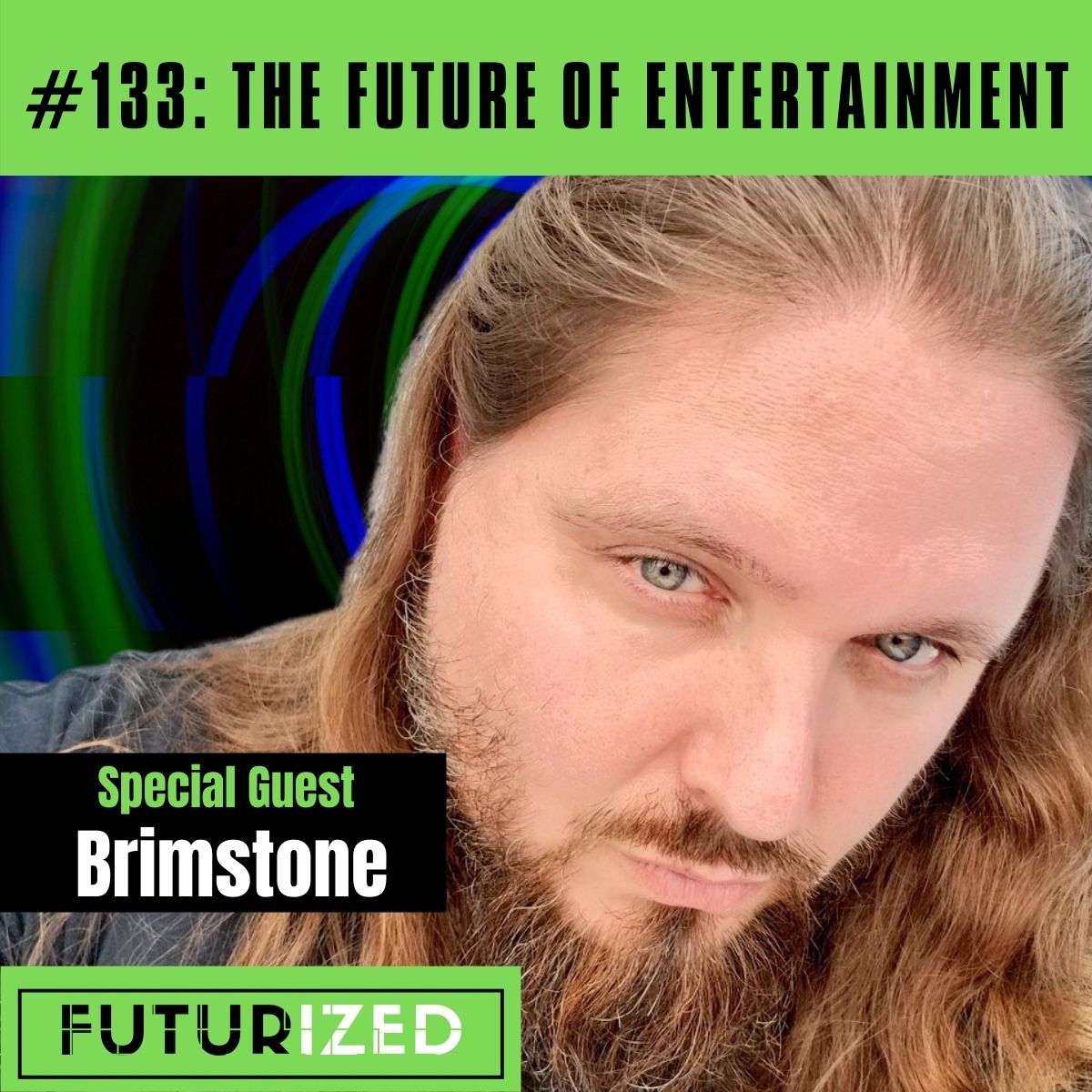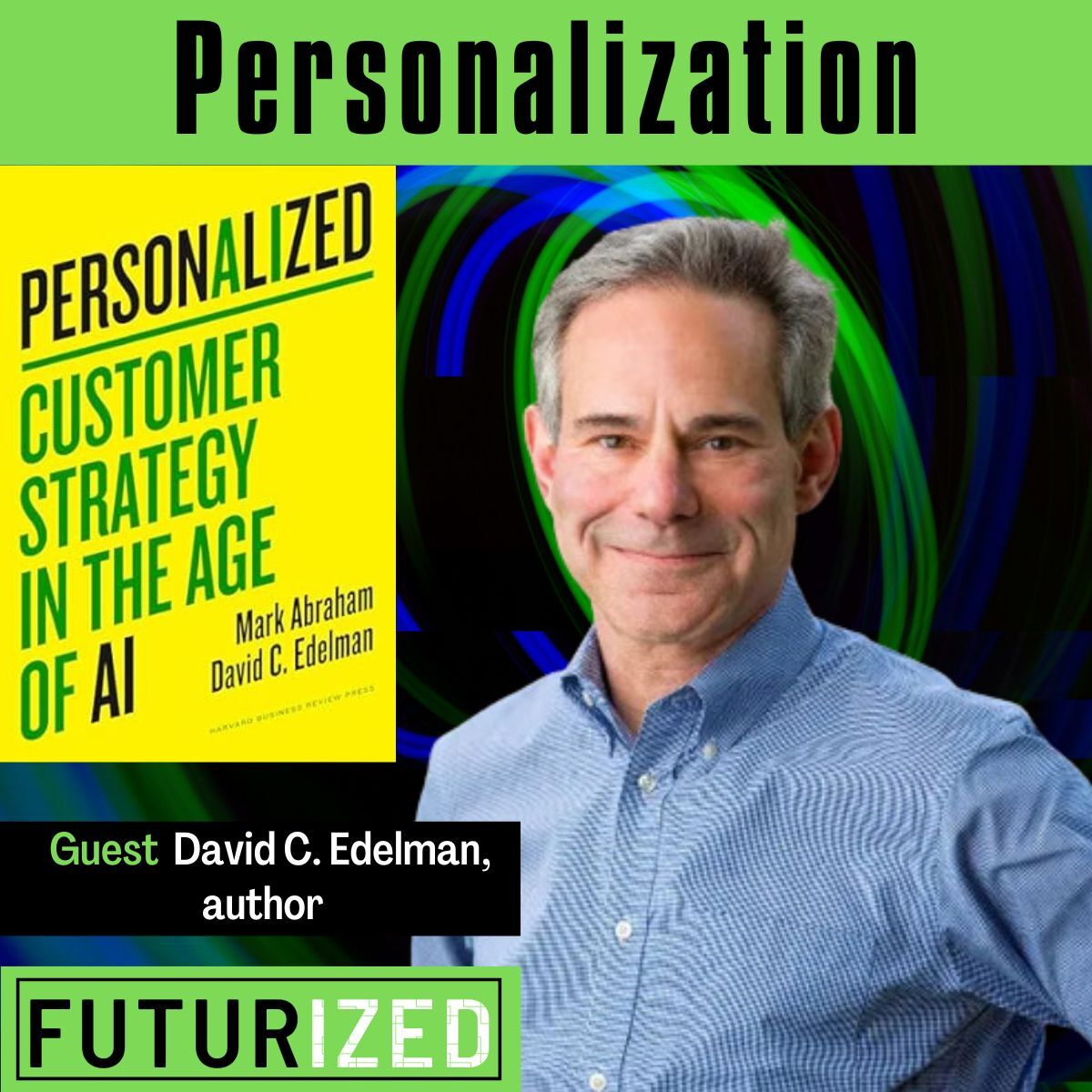The Future of Digital Health AI
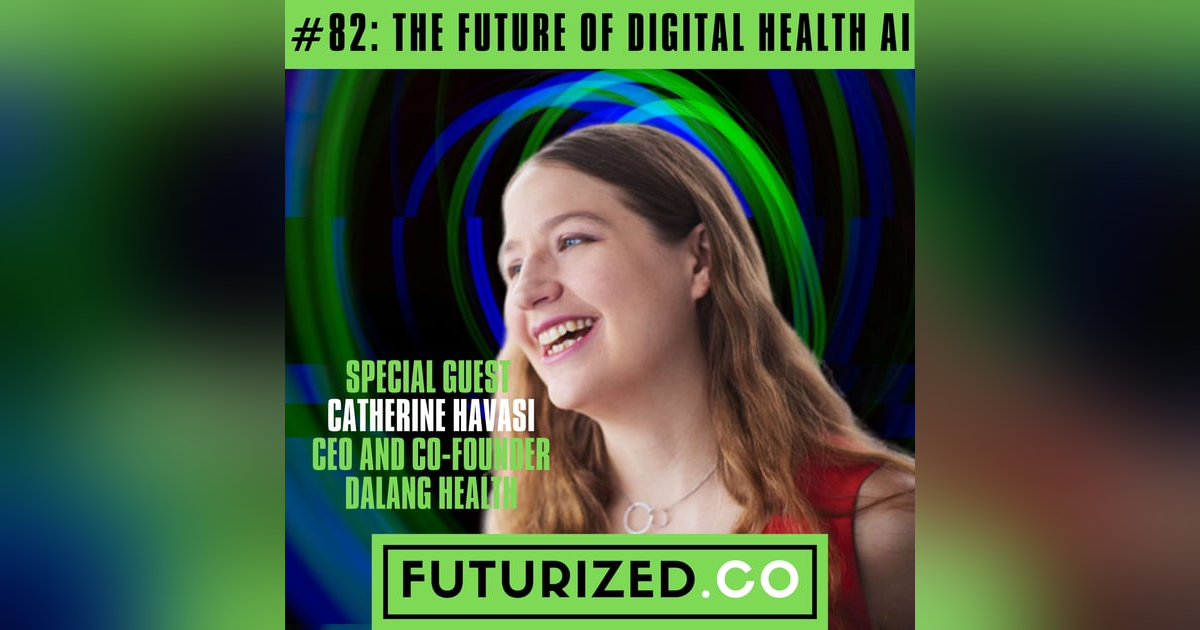
Catherine Havasi, CEO and co-founder, Dalang Health, interviewed by futurist Trond Arne Undheim.
In this conversation, they talk about Patient experience. Telehealth. Personalizing digital health. The AI space (ConceptNet, crowdsourcing for AI, word emb...
Catherine Havasi, CEO and co-founder, Dalang Health, interviewed by futurist Trond Arne Undheim.
In this conversation, they talk about Patient experience. Telehealth. Personalizing digital health. The AI space (ConceptNet, crowdsourcing for AI, word embeddings, transfer learning, multilingual natural language processing (NLP), and machine learning, federated learning). Chronic Disease Management. Exciting applications (health coaching, telehealth, mHealth, chatbots, agent assist, augmentation, scaling personalization, digital characters, animation, avatars). Perspectives on the future.
The takeaway is that Digital Health AI must emerge but only when we are sure the software truly works. For now, what we have is scattered machine learning applications that approximate meaning and compute fairly mindlessly. Hyperpersonalized health will indeed depend on AI, but the tech will only succeed if its developers realize that life is complex, people are different, and there was a reason healthcare has been somewhat tailored to each person in a manual fashion. Behavioral health apps are great, but need to be integrated into the health system in an interoperable manner before it can have its true effect on population health and individual health outcome.
Having listened to this episode, check out Dalang Health as well as Catherine Havasi's online profile:
- Catherine Havasi (@catherinehavasi) https://www.linkedin.com/in/havasi/
- Dalang Health (@dalangtech) https://www.dalanghealth.com/
- Homepage https://www.catherinehavasi.com/
The show is hosted by Podbean and can be found at Futurized.co. Additional context about the show, the topics, and our guests, including show notes and a full list of podcast players that syndicate the show can be found at https://trondundheim.com/podcast/. Music: Electricity by Ian Post from the album Magnetism.
For more about the host, including media coverage, books and more, see Trond Arne Undheim's personal website (https://trondundheim.com/) as well as the Yegii Insights blog (https://yegii.wpcomstaging.com/). Undheim has published two books this year, Pandemic Aftermath and Disruption Games. To advertise or become a guest on the show, contact the podcast host here.
Thanks for listening. If you liked the show, subscribe at Futurized.co or in your preferred podcast player, and rate us with five stars. If you like this topic, you may enjoy other episodes of Futurized, such as episode 55 AI for Medicine, episode 19 on on Digital Health in Future Pandemics, , episode 26 How to Write a book on the Future of Healthcare. Futurized—preparing YOU to deal with disruption.
Digital Health AI_mixdown
Trond Arne Undheim, Host: [00:00:00] Futurized goes beneath the trends to track the underlying forces of disruption in tech policy, business models, social dynamics, and the environment, I'm your host, futurist and author in episode 82 of the podcast, the topic is the future of digital health AI. Our guest is Catherine Havasi CEO and co-founder of Dalang health.
[00:00:25] In this conversation, we talk about. Patient experience and tele-health personalizing digital health and the AI space with the concept of net crowdsourcing for AI board embeddings transferred, learning. Multi-lingual natural language processing or NLP and machine learning and federated learning. We discussed chronic disease management and exciting applications, such as health coaching and health chatbots, agent assist, augmentation, scaling, personalization, digital characters, and even avatars.
[00:01:02] We have some perspectives on the future. So Catherine language models and AI at the media lab, was that something that Marvin Minsky really honed in on and was selling to you guys. So was it fairly apparent at the time that, that it was going to move into direction of, or at least that language models were becoming fruitful to computers?
[00:01:27] Catherine Havasi, CEO & co-founder, Dalang Health: [00:01:27] I think way back in it, especially the late nineties, we didn't really have the concept of the language model like we have today. And so I think, especially for folks who have been in AI a really long time, the idea that you could build something as automatic as a language model received a lot of skepticism especially there was this huge gap between the idea that.
[00:01:48]You could learn connections between words, through pattern matching and have that be the basis of anything. And I think the idea that magic com data goes in one end, there's a magic box. That's intelligence comes out. The other end is something that pretty much everybody. And in AI at the media lab at the time was not terribly favorable to.
[00:02:08] And I think that there was a lot to be said for that. I think these are really deep learning. Language models are really great pattern recognition engines that really build the idea of how words relate to each other and what words mean. And I think those are bases, right? They are what you build on as you're building an intelligence, but there's a lot more to it when we started.
[00:02:30] There was a real idea in the late nineties of what is called technically common sense. And this is a ridiculously silly sort of idea that everybody in the world knows something, right? We all have information about how words in the world relate to one another. And we all bring that to bear.
[00:02:49] And when we talked to somebody else, we assume they know the same thing and that lets us communicate in a way that's fairly. Fairly natural, right? Cause we don't have to repeat ourselves all the time or explain things all the time. And I think that's something that's really quite important. And that was something we started out with and the idea of how can you give language model common sense was one of those issues in the beginning and bridging the gap between structured and more neural on models was something that at the time was really.
[00:03:17] Unheard of, but I think now people really believe that you have to build that bridge
[00:03:22] Trond Arne Undheim, Host: [00:03:22] and the reason they didn't think that it was relevant, was it that they didn't think it was possible because they, the two domains historically, It didn't really have anything to do with each other. In a certain sense they really weren't, they're just two very parallel worlds.
[00:03:39] It's okay, you are there linguistic academic, and that's a nice world and that's the end of it. Or you work on computer science. So the worlds didn't communicate. They didn't need to communicate. They had no reason to perhaps it was just two very distinct academic areas. If I'm correct.
[00:03:56] Yeah. And
[00:03:57] Catherine Havasi, CEO & co-founder, Dalang Health: [00:03:57] I think when we saw Google come out of Stanford, which were really one of the first cases where anybody knew what a computational linguist was, or someone who did natural language processing, I think Google went out there and they said, look, we got to get people to understand that you can use computers to better understand language at scale, because we want to hire the people who go through the system and learn about it.
[00:04:18] So
[00:04:19] Trond Arne Undheim, Host: [00:04:19] that's interesting. I'm never really fully grasp that, but you're saying that Google had a big hand in that just because, people think of Google as a search engine, but they don't. But I guess that linguistic turn is also extremely important there, I get that because what their model was trying to do was it was to position words and search phrases.
[00:04:38] And so they had, they needed that expertise really badly.
[00:04:41] Catherine Havasi, CEO & co-founder, Dalang Health: [00:04:41] And when you think about it, Remember when search engines came out. Now, I don't know if people are listening, will remember like the beginning of search engines, but people will use to talk to a search engine. They used to do things like ask the search engine.
[00:04:55] Oh yeah. My cat is sick or I would like to order a pizza or something like that. They're searching. And of course you'd get results, because that's not what I was looking for. But when we get new technology, we really want to interact with it in this way. That's like things that another person,
[00:05:08] Trond Arne Undheim, Host: [00:05:08] and then.
[00:05:09] Yeah, I'm struggling a little bit with remembering all of the engines, but I remember at my university, we had, they were all listed on the page and HotBot Alta Vista. All of these and then ask Jeeves was showing up at some point. And that I think is to your point, because those guys were saying you have to have a human Butler or an automatic Butler.
[00:05:31] You're asking a live person. They were trying to really, before they had the technology to it, they at least knew. I thought they knew that humans want to have an approximation of. Of a, another human on the other side. Which is an interesting, sort of segue to this, because we wanted to talk a little bit about chat bots and that whole world, why did it take so long?
[00:05:55] So you had this experience there at the media lab, which, dates both of us, but definitely that's not, it wasn't even five years ago. This was a long time ago in computer time. And then it took an enormous amount of time. I would say before chatbots again, became anything because there was the idea that would be a good idea, but then you actually had to implement something that even remotely is attractive to a human being, talking to.
[00:06:25] Can you just line up for us why that took so long? And where are we now? And I, because I know this is a topic, what you're trying to now apply this to health. This concept of chatbots has now come around almost full circle. It's out there in commercial implementations, in Alexa and a lot of things.
[00:06:49] Catherine Havasi, CEO & co-founder, Dalang Health: [00:06:49] Yes. And I think the, when you say it's come around, I would say, I don't think we're there yet. And then I think there is a lot to be said about why we're not there yet. And what's going on with that. I think we have always wanted to talk to a computer. When I used to teach for years, I used to use the star Trek five, pick up the mouse, talk to them, the whales and all that.
[00:07:08] And then eventually students stopped. Remembering that movie. And then I stopped making that joke cause all the TA would laugh and that was bad. And then you were like, oops, oops, oops. More current cultural references. And I think one of the things that ends up happening is there's this.
[00:07:22] Ability for chatbots to be really something that's very pre-programmed. So when chatbots came out in the beginning a lot of it was about let's anticipate every possible thing that a person can say and walk through it a little bit of a tree where at each point you categorize what the user is saying and then move them in the direction with that tree.
[00:07:40] And in the beginning, it was all chitchat, right? What's technically called a chit chat agent. The idea that you want to make small talk with a computer and as lovely as that is, and as novel as that is for about five minutes after that, you're made small talk with the computer and you've had that life experience.
[00:07:56] You don't need to do that again. And so I think what needed to happen was use cases new to, to come into being, and people needed to get more comfortable with the idea of goal-based conversation. And when we saw Siri came out, now you, as much as you struggled to think back to the hot button AltaVista, hopefully people remember Siri a little bit clearer when that came out, people would talk to Siri in a very expressive way as well.
[00:08:17] Just like they talk about the search engines, but very quickly you learned one, you're not an idiot for talking to your phone on the street, which is huge culture shift that had to happen. And to, there are things that it's good at and things that it's bad, but the things that it's good at, it makes much more efficient use of, as a parent has free being able to talk to Alexa.
[00:08:35] Really good use case and there's these compelling reasons why people started using it. And I think we're naturally drawn to conversational interfaces. There are, and then what really took off was in customer experience. And I think that became a huge driver for chatbox as a whole is the idea of the chat bot on the website.
[00:08:54] Trond Arne Undheim, Host: [00:08:54] Tell, tell me a little bit about your experience there. With Luminoso you built a company that wasn't just about customer experiences, but you did they touch very much on that? And from what I understand, the opportunity yeah. You guys saw there initially was, there were a lot of, or there always, in large companies is a lot of conversation happening and a lot of it is recorded for legal and other reasons.
[00:09:18] But it's just a bunch of conversations and it's data. That's just sitting on some server in, waiting for a use case. And you guys found a use case for it. Tell me a little bit, how did you discover that, that there even was all this data and how did you unroll that data and start making sense of it for organizations at
[00:09:38] Catherine Havasi, CEO & co-founder, Dalang Health: [00:09:38] the media lab, we got really interested in working with market research firms.
[00:09:43] And trying to understand their problem. I love small data problems. It's just something I'm very passionate about is how do we work with places where you take Google's whole internet comes in the box sort of approach. And if you look at something like chocolate, or even since, people talk about the Moonies wonderfully dynamic ways, and you have only tiny amounts of data of people talking about them.
[00:10:02] And so we started looking at that and at the time marketing had qualitative marketing. Was following the falling behind quantitative marketing because we still got this, the first ability to really understand what your ad spend got you in quant marketing. And that meant that when walked into the same office, everybody spent all of their time talking about quote, marketing and never call marketing.
[00:10:28]Never market research, never qualitative work, because you couldn't put any proof to it. And so programmatic ad buying was blowing up and nobody was looking at, what the customer actually wanted. And so we basically had gone in and said, we want to be able to build the tool that helps people quantify qualitative marketing.
[00:10:45] And that was the initial Luminoso push. And as part of that which is actually a great use case. And. Good business for a larger sized business. But the answer is you do market research and then you wait six months and you do market research. So it's not exactly a SAS McCall, but you probably remember those days when we were like, okay, now what?
[00:11:03]But we started realizing that people would take data from the customer experience center and start putting it into the system to do qualitative marketing on it. If you want to know why the razor broke, you go to the call center, you get a bunch of recordings of why the razor broke when he put them in the system, and then you do cheat pans focus group.
[00:11:20]And I think that's how we started learning that this data trope was there and that people weren't using it is because they were using it to essentially do market research on it. And we said, Hey, we're we could have
[00:11:30] Trond Arne Undheim, Host: [00:11:30] use there as well. So that's interesting. And, out of that, what kinds of use have companies you worked with?
[00:11:36]Made out of this data. What sort of discoveries did they make? Give me some examples of things that you can discover in sort of random data that, that your clients customers are calling you.
[00:11:46] Catherine Havasi, CEO & co-founder, Dalang Health: [00:11:46] Yeah. From the Luminoso perspective, a lot of it was what problems with products are driving people to the turn, things, just stores.
[00:11:53] What problems with products are driving people to give you a low rating on NPS. We had this really fun use case with a big box store. Where we help them debug, why everybody hated pre-ordering video games with them, which I'll get into why I use this use case in a second is because at night after the pre-order party is done, everybody gave them terrible ratings.
[00:12:15] They had to process each pre-order as a return and then check out the video game, which took forever. So everybody was waiting in this line and they had to combine that from a bunch of different verticals to actually come to this conclusion and fix the problem. Whereas probably if they talk to any store manager, they would have immediately fixed it.
[00:12:32] Trond Arne Undheim, Host: [00:12:32] But at least now they had a complicated way of finding qualitative data. You know how companies work sometimes it's not getting to the answer. That's the point. It's just, can you justify the rationale of why you're even acting because any action, a company takes costs money, so you it's better to find an elaborate rationale.
[00:12:52] Then a simple rationale because if someone just said, Hey, it's a problem, please fix it. It doesn't enter the the vocabulary. Okay. So this is interesting, but in all of this work at Luminoso, you were making use of language model and natural language processing approaches, which either way, it's just such a mouthful, natural language processing.
[00:13:14] Is that at monolithic is that now a field that's clearly understood. Do people in the field do regular software engineers have any idea what this is? Has it become a sort of a standard vocabulary by now?
[00:13:29] Catherine Havasi, CEO & co-founder, Dalang Health: [00:13:29] I think so. I definitely think more people know what you can do with NLP. They know what the power of that is.
[00:13:35] It's been in the popular press a lot recently. So I think it's a really unknown thing which helps. But it also ends up in this situation, especially with conversational agents that we see where for a while we ended up with every insurance company, we talked to fell into one of two camps. One of which is conversational.
[00:13:52] I will never work. It will never do anything. Now Luminoso never did conversational, but when you hear about it, it'll never work. And the opposite campus, our competitors have a fully, Fully intelligent, completely automated customer service rep who can just talk to people.
[00:14:05] Can you bring me that tomorrow? And so there's either the skepticism or the, wild, it's not even optimism, right? It's just unreasonable expectations of what can be done with that RFP. And to get back to language models. That's what really scares me, which is that there are real limitations on what can be done with the deep learning models, even the GPT threes that you hear about that, that people worry about from this.
[00:14:30] Trond Arne Undheim, Host: [00:14:30] Tell me about that. The GPG is three, just to bring people up to speed, but it was this new thing that was just released. Can you explain a little bit what it is and why people got so scared about it? Because there was this public scare that some automated bot had used this thing and. Yeah. W what is the big deal about it and why is it much less of a deal then was the press.
[00:14:52] I think the press just needed a story at that point, right? Because didn't anyone really believe that the computers were coming after us.
[00:14:59] Catherine Havasi, CEO & co-founder, Dalang Health: [00:14:59] I think that whether or not the press needs a story and how they act, and what's wrong with a attention economy, plus news is a whole other podcast and really interesting stuff.
[00:15:10] But yes, I think that. The idea that, Oh, Hey, we're watching AI generate what? And, anytime you do any of these things, it's all handpicked. And a lot of we pick the best ones, send it out there, but it's relatively coherent. It sounds like a person talking. Even if that person might be a little crazy right.
[00:15:29]Or might not be completely coherent. That's the kind of thing that you get out of GPT. And I think people didn't really realize that. That was something that a computer could do. And when we taught intro to NLP at MIT, one of the things that we ended up doing is using an old technique called a Mark off chain.
[00:15:45] And so it would just learn a bunch of how different words come off next to each other. And a big piece of writing. Like you could do Dickens or in a Bible or all of the Lord of the rings, and then you could generate texts. That sounded like it came out of Lord of the rings from a prompt. And that was fun, but this is just that taken to an incredibly what's your level.
[00:16:03] Trond Arne Undheim, Host: [00:16:03] Yeah, and this was pretty recent because the released, I just looked this up and the release was on June 11th, 2020, and it's called generative pre-trained transformer. But it is essentially what we've been talking about all along. It is a Landry language model and it was released by open AI.
[00:16:18] Catherine Havasi, CEO & co-founder, Dalang Health: [00:16:18] Yeah. And GPT two, which was the thing we got a lot of press was released a little bit earlier than that.
[00:16:22] GPT three is bigger and they didn't want to release the model in the beginning because they were afraid it was going to keep used for. Nefarious ends or that's what they said, but which a lot of people in the, in, in AI were a little skeptical, you can retrain something that looks like GPT to, if you really know what you're doing at that point.
[00:16:39] And so it was like what are you doing? Are you actually preventing something bad from happening? Or are you keeping people at universities that don't have a lot of GPU's from being able to use the language model, and, or are you causing there to be more press right? And because they said that there was a huge amount of press.
[00:16:55] But now they've released everything. Except they're actually commercializing the new version, so they don't release it to the public. They are have a sales partnership, I think, through Microsoft,
[00:17:03] Trond Arne Undheim, Host: [00:17:03] with it right now you think of open AI. So the whole idea there is. Is to be open about AI, which, sounds coherent and important, right?
[00:17:13]Then that's not a joke because there, there is a big transparency debate here. So I don't know at what, at whatever point computers do become responsible for important things and to some extent they are already in very niche domains. It is important to know what the rules are that created a certain.
[00:17:32] Machine-based outcome that then becomes a real outcome. So I, that's true, but is it really possible for one organization to have a hand in making the world of AI more open? The mandate sounds really good.
[00:17:48] Catherine Havasi, CEO & co-founder, Dalang Health: [00:17:48] Yeah. I think that there's, I think that there are a lot of organizations that are working very hard to keep AI open.
[00:17:53] And I think that's an important thing. I think really one of the things they're interested in doing. Is initially for the mandate was around AI access. So making sure everybody has the ability to use powerful AI to do the things they want to do. And you can think about what happens if it doesn't happen.
[00:18:09]If only fortune 1000 companies can use AI that might put startups at a disadvantage. If only, the developing world doesn't have access to AI, that's a big issue.
[00:18:19] Trond Arne Undheim, Host: [00:18:19] Yeah. And how realistic is that? Because you've been in this field for many years. And similar to what we were going to talk about now, which is, to what extent are chat-bots becoming real and what is real mean?
[00:18:29] And can they be used for health, which is really serious stuff. But before we get to that debate, might as well have the debate about. This this thing around and other types of AI, is it, yeah, is it,
[00:18:42] Catherine Havasi, CEO & co-founder, Dalang Health: [00:18:42] I think that we have a bunch of issues that are not one is that I think that there is a lot of misunderstanding about AI globally and everywhere.
[00:18:55] And I think that's a huge,
[00:18:56] Trond Arne Undheim, Host: [00:18:56] huge problem but I guess I was almost forgotten what question but what I was saying is it a threat. Real threat that AI can move so fast in one country or in one type of organization. Let's you were just saying larger organizations, marriage systems.
[00:19:13]Yes, in, in one paradigm where data for instance is at a premium. Clearly, if you don't own the data, you are at a disadvantage. So that's one thing, release the data so that people can work on that. But are there other reasons why larger players would be or smaller players rather it would be disadvantaged and you can't just apply, two, two smart people in a garage can no longer compete with large player.
[00:19:38] Is there any scenario where that is not going to be the case anymore? They, because they were saying that about Google, you can never catch Google, but now of course, plenty of people have caught Google, Amazon arguably called Google, in product search, at least for what they're selling many other apps.
[00:19:52] And you isn't this, just the logic of that. Computer world that we are so worried that others can't catch up, but by the time regular regulators have gotten onto this challenge, the market has caught up. So I'm just wondering, is this something that people make up to just say that this is more important than it is of a challenge or is it real?
[00:20:13] Is Microsoft and big tech now controlling us?
[00:20:17] Catherine Havasi, CEO & co-founder, Dalang Health: [00:20:17] I think that the real challenge is around innovation and what spurs and builds innovation. And I'm going to get pretty real here, honestly, because right now, a lot of AI and to build a, to build an AI competent and innovative AI company, you pretty much have to build it on the backbone of somebody.
[00:20:37] And so that could be AWS. It can be Microsoft, it can be anything out there. And at that point in time, you reach a level where you. Are using their services, you're using their compute, it would be prohibitive for me in any number of the things that I'm doing and half the innovations. And we came up with a digital intuition where, because we didn't have a lunch.
[00:20:54]And we needed to approach things differently. And so I think, yeah, it can be tremendously a tremendous innovation catalyst, so not have the resources, but once you build on these backbones Microsoft poop, Amazon, et cetera. Once you build into the ecosystems of IBM or something like that, you essentially become their kind of external innovation lab.
[00:21:12] Right?
[00:21:14] Trond Arne Undheim, Host: [00:21:14] Why startups have become so popular with these big companies right there. Isn't the big company these days that doesn't have a kind of a friendly startup arm.
[00:21:22] Catherine Havasi, CEO & co-founder, Dalang Health: [00:21:22] Yeah, exactly. I'm at friendly startup bottom. Eventually fundamentally locks you in. Yeah, do that company. And then, it becomes very helpful to pull the AI startup
[00:21:31] Trond Arne Undheim, Host: [00:21:31] away from the company.
[00:21:32] Elistic then is a concept like open AI in and of itself in providing a counter to that specific challenge.
[00:21:40] Catherine Havasi, CEO & co-founder, Dalang Health: [00:21:40] We saw it when I take GPT free over to Microsoft to commercialize it. So I think that answers that question.
[00:21:47] Trond Arne Undheim, Host: [00:21:47] Yeah, unfortunately, exactly. Because eventually that the problem is there's big money in it.
[00:21:52] So the temptation is big but also yeah, it's hard to maintain that, that perspective all the way through.
[00:21:59] Catherine Havasi, CEO & co-founder, Dalang Health: [00:21:59] And it's very hard to run an independent marketplace. I was, I did some consulting work with a couple of companies that were at times they keep, how do you run independent in marketplace for startups?
[00:22:09] Yeah, it's hard. It's real hard. And
[00:22:12] Trond Arne Undheim, Host: [00:22:12] talk to federated learning CR Catherine, because that has been taught it as this is the solution to everything because now yeah, of course someone will still own the data, but at least you're not sharing the data. So that's a solution for a couple of things, it's for the keeping, the privacy of the people who have. Not giving up the data so that anyone can buy it, but it also, presumably also starts to fix this big versus small I idea to some extent, Federation does loosen up the system, doesn't it?
[00:22:45] Catherine Havasi, CEO & co-founder, Dalang Health: [00:22:45] I think that it also allows us to tackle problems and yes, but it allows us to tackle problems that were different than the problems we'd be able to tackle otherwise.
[00:22:54]Because let's actually go to healthcare as a really good example of this, right? So let's say you are working on building drugs for a rare disease, right? So you, right now, if you wanted to go do that, you would have to go inside of one hospital system and any one hospital system does it, or even treatment plans for where just, they say don't have enough people with this disease to really have any good idea of how to treat that.
[00:23:19]But if you were able to securely build a tiny model inside each one of say the 24, however many NHS trusts there are, which is the way the NHS system works on their data works. You can build those models and then you can build a model across all of them without looking in the box of any one of those individual patients or individual hospitals.
[00:23:40] You can good cohesive idea of what's going on in these patients and be able to think about treatment and the way that you've been before. And I think. Being anything that can cut down the sort of go-to market cost for treating things that tend to be places where they aren't the big ticket drugs. And there isn't as much of an economic incentive to build towards them.
[00:24:05] I think if we can solve
[00:24:07] Trond Arne Undheim, Host: [00:24:07] that problem, that's really big. I agree with you, Catherine, but isn't the problem then that similar to any other computing debate where big tech of course. Outwardly are all in favor of some layers of interoperability, but at the end of the day, one does have to protect a little bit the strength that you started with.
[00:24:27] So I can even imagine, like at a big academic hospital, And they're saying yes, we should experiment a little with federated learning, but after all our big advantage is that not only do we have a lot of doctors, we have a lot of patients, which means we can work on rare diseases because we are the only ones that have a patient population of larger than 10 for this particular rare disease.
[00:24:49] Now, if you start federating that data out and saying, Hey, This massive we have the world's biggest data set on these 19 rare diseases. Come look at our data. There's a problem there with the business model eventually isn't there.
[00:25:05] Catherine Havasi, CEO & co-founder, Dalang Health: [00:25:05] I think the healthcare data becomes very interesting.
[00:25:08] Yes. And I think it ties into the other problem. Which is that there is a great push for again, big tech to get as much data access as they possibly can. And there's not as much of an incentive for anyone to share that data. And I would want to share that data. I would want Google to have my health record that would personally I'm a little bit more privacy person personally.
[00:25:26] It freaked me out a lot. We want to see what happens when you take your Lavango and you stick it to your 23 and me, or you take your Apple watch data and you put it together with your health record, and there's a tremendous idea that you can, you might want the outputs of that.
[00:25:44] You might want to know the information that's contained within, but also you might want to protect your privacy. And I think. There has to be a solution that bridges that gap. And I think this kind of thing is really the ultimate. Anything that would let that kind of thing happened, but in the keys where you do have enough data by yourself, within a hospital, I think then that's absolutely something they want to be doing.
[00:26:06] They want to be out there the Oxford collaborations that have been somewhat truthful reason. You're right. And I think a lot of that has to do with that, but I'll leave it up from there also doing the model that we're talking about. They just don't have the federated learning yet because I don't think it's.
[00:26:19] 100% ready for prime time, honestly.
[00:26:22] Trond Arne Undheim, Host: [00:26:22] So how did you get into health as a use case Catherine? Cause you've been working on market research, you were helping all kinds of consumer companies with their product problems. And then w we're going to talk about this in a second, then you're interested in entertainment.
[00:26:36] Of course, there are so many use cases for your skills. But you moved on a little from Luminoso. You had commercialized or starting to commercialize something new. How did you get to healthcare as this is. Interesting. Eh, w was it COVID that sort of spurred this or have you been intrigued by the healthcare space and not in other ways
[00:26:54] Catherine Havasi, CEO & co-founder, Dalang Health: [00:26:54] I've been looking at healthcare space before I think we had done a little bit of work looking at doctor, patient communication at the lab trying to understand whether or not the.
[00:27:03] Basically bedside manner affects outcomes, which is the sort of Holy grail that you would not believe there has been. There's wonderful research for up to about three months out. But when you think about over the lifetime of a patient and we don't have that, we can't post that right now. And who knows.
[00:27:19] It's true. And I know it's true when actually proving that it's true could help improve the health system in a lot of ways. So we had been looking at that, honestly, when we were interested in speech acts and dialogue and things like that.
[00:27:31] Trond Arne Undheim, Host: [00:27:31] And what was the barrier to doing research on bedside manner?
[00:27:34]What was the problem? No one has collected any data on it.
[00:27:37] Catherine Havasi, CEO & co-founder, Dalang Health: [00:27:37] Yes, actually. Yes.
[00:27:39] Trond Arne Undheim, Host: [00:27:39] There's no data. There's no microphone at the bedside.
[00:27:42]Catherine Havasi, CEO & co-founder, Dalang Health: [00:27:42] Exactly. And there are places where they've done that. The Brown university Dr. Arden Wilson's research group. Does that there's some folks at Hopkins we've done things like that.
[00:27:50] And they've measured. They called the patient to an extent if they called the patient three weeks out and they get really interesting results there. But you can only do that for so long. It's a practicality. So the question is how do you think about probing that for longer? But that's what we had started to look at and we're looking at it again now.
[00:28:05] And so that's, I guess how I got into that COVID was actually a part of it, I'm going to be honest, right? I think we all entered a phase where. We felt like I want to do something to make digital health take off. When we had looked at digital health a lot before COVID
[00:28:18] Trond Arne Undheim, Host: [00:28:18] and had really had influenza models as well.
[00:28:20]Deficient models of influenza as well. Yep.
[00:28:23] Catherine Havasi, CEO & co-founder, Dalang Health: [00:28:23] We did that. We did. We, Luminoso obviously has healthcare clients who we're doing CX work with, or market research with their co-ed. And we looked at a lot of things through that. We have worked with the CDC on doing. I'm very interested in what happens on social media.
[00:28:37] We looked at those, the CDC looking at whether or not we can use what is technically called open-source signals. And so people talking on social media to track potential epidemics, and this is like 2010, so well before that, and that was very surreal in the modern world. And trying to look at that kind of stuff.
[00:28:55] So I suppose that was something else. We had looked at engagement as a problem in digital health. Pretty early on. So when you there's, when you think about it, digital health has a lot of promise, especially the long-term care behavior change, guiding digital health but it has a bunch of different issues.
[00:29:13]And one of those issues that was really apparent maybe about a year ago, even before the pandemic was churn rate and w what gets called assurance, and there was a result that. Maybe I can look it up and link to it, but a great result that looked at a meta-study of all these clinical trials of prescribed digital therapeutics, digital apps that said the effective churn rate out of the clinical trial.
[00:29:37] It was almost 50%, which is ridiculous. If you're in a clinical trial and you just stopped doing it, that's a really high number.
[00:29:43]Trond Arne Undheim, Host: [00:29:43] Yeah, and it's very expensive because it takes so much to recruit people to trials. For sure.
[00:29:50] Catherine Havasi, CEO & co-founder, Dalang Health: [00:29:50] Recruit, recruit people into Lavango, to recruit people into neuro more Talkspace or any of these things.
[00:29:55]And we'll leave. And if we can think about engagement, we can keep people in these programs and we can make them accessible to more people. And then we can help with. Prediabetes patients getting people's health on track, we can help with at risk pregnancy, so you can make a real impact.
[00:30:10] And I think that's very compelling to start understanding what you could, I love entertainment. I love customer experience, but there's real impact here. And I think that's motivational.
[00:30:22]Trond Arne Undheim, Host: [00:30:22] So then bring me into your mind space then. So you start looking at this application set and there are so many.
[00:30:29] Separate areas that are trying to use behavioral incentives and some combination of messages. And they're not all, they're not all chat-based, but they're definitely messages of some sort that are prompting patients to take these steps in the right manner. But, and there's this issue of personalizing it obviously.
[00:30:51] And, but then also maintaining the attention over time and the incentives. Is one of the problems also that there are so many, and I don't want to speak out of turn to are so many startups, but there are so many initiatives, some of them from large players too, that is a little confusing, right?
[00:31:08] For a patient because you may have that one disease, but then people are coming at you with all these apps and how apps work, suddenly our app store, on your phone just fills up with all these things. And you're like, which of these are connected to my true hospital care, which of them are.
[00:31:24] Really just wellness apps that are very well-meaning, but you know why? Because you can invest your time and all this, and then these things start beeping and you're like, okay, my life is full of more noise. So this is a real issue on the patient side as well. It's consumer based healthcare, but there's a point where this is just noise.
[00:31:46] That's the negative. If you don't pick the right things. They're not going to do all those things that you just said there. They're not going to improve your health. No,
[00:31:55]Catherine Havasi, CEO & co-founder, Dalang Health: [00:31:55] I think that's completely a point and I think we are in real danger of that happening. And there's even a deeper issue and digital health as a whole, which is that there is an in healthcare you talk about something called comorbidity, which gets that a lot of serious diseases occur with a lot of other serious diseases.
[00:32:11] And if you end up in a situation where you have one app for one and one after the other, and one app tells you to do one thing. And when I told you to do another thing, how is that supposed to work?
[00:32:21] Trond Arne Undheim, Host: [00:32:21] Yeah. This is certainly much better than, taking 10 medications for four different things that start to interact.
[00:32:27]You could say, Oh, digital therapeutics, it's so safe and it's all wonderful because it's digital. These are real, there are real consequences. One app says, go to the left. The other one says, go to the right. You can do both.
[00:32:38]Catherine Havasi, CEO & co-founder, Dalang Health: [00:32:38] And that that, especially apps that think about dosing and things like that, it needs to be more cohesive and everything is its own little app.
[00:32:44] And I think this is a chat bot problem in general. If we think about the way chatbots work in, when we chat to be absolutely kinda, every financial service organization in China has a bot that lives on, we chat as much as Facebook messenger wants to be that for chat bots in the U S it is.
[00:33:00]And now every single thing you deal with that is a conversational agent has its own little app. And that you could see the numbers on how that affects and with healthcare has real. So I think there has to eventually be something that is a digital pharmacy. But thinks about itself as a digital pharmacy where it's curating ideally some of the stuff to stop the beeping, but also making sure that, when things don't agree with each other, there's a human being to fall back on.
[00:33:27] And I think that's has to happen. It has to be important.
[00:33:30]Trond Arne Undheim, Host: [00:33:30] That makes sense. Is it a technology problem or is it more eh, organizing the different players type of problems and aligning these incentives?
[00:33:40] Catherine Havasi, CEO & co-founder, Dalang Health: [00:33:40] I think you can, when you come in. And one of the things that I learned doing this is that when you come in, I did 45 interviews, right?
[00:33:46]With people all over the spectrum of healthcare from, the PBMs pharmacy benefits managers, all the way down to the drug manufacturers, to the health plans, et cetera. And you comment and you notice right away, what's going on with technology and that technology and technology adoption is fundamentally different healthcare than it's everywhere else.
[00:34:05]At a certain point, many more things are built in house. Many more things have to line up with one or two major EHR players that are technology issues. And there are technology delivery issues, right? People get very frustrated with these systems. They look like. Lotus notes. They really do. And and everybody is very frustrated, our pipelines and major insurers I heard about where one person takes a message.
[00:34:31] They copy it into a Slack channel and then somebody else, somewhere else takes the message out of the section and copies it into another piece of software. This actually happens at a big insurer and we heard many things at that level. So there is a technology problem and there's a platform problem, and there's an integration problem, but it turns out there's also a non-technology and I think.
[00:34:49] Everyone is so frustrated with the technology problem that you, it takes you to really talking to them for a long time to understand that the non-technology problem is just as big. And it's, we have a lot of different players in healthcare. They all have different incentives and trying to figure out whose problems something is really as an issue.
[00:35:07] So tell me, because
[00:35:08]Trond Arne Undheim, Host: [00:35:08] This almost makes me depressed on behalf of digital health because this year was a massive year for general health and one would think, yeah, It's exploding and it's all gonna happen now, finally, but on the other hand, it's tempering that we're having this discussion because you have to realize that it's it, isn't just a technology problem.
[00:35:26] And venture capital can spew all of the money they want to into this problem, but you cannot fix it overnight just by a more clever app here and there. The entire system needs to move because it would be maybe too convenient to think that digital health is that. Only is that killer app that can kind of chip at the structures without needing to change the structure, because at the outset it can I can download this.
[00:35:54] I can be helped with whatever disease from that one app. So individually it is so alluring, but on a system level, yeah, maybe this whole thing just leads to the whole animal or healthcare collapsing because. It becomes so complex that even actors who have vested interest in keeping the system for them, it becomes unmanageable.
[00:36:18]Is that really the solution here? That's like the it's the backdoor into innovation, I guess just blow it up from the amount of innovation, because the only alternative here Catherine would be that someone really starts to structure this process in some way on a business side.
[00:36:33] I think we have to realign incentives. All of you guys go over here, you guys go over there, let's have a meeting and a powwow and figure out, and then, let's go back and, like there isn't, this can't doesn't seem like it's a problem that is going to just naturally evolve.
[00:36:54] Catherine Havasi, CEO & co-founder, Dalang Health: [00:36:54] I think it's there's I think a couple of things have happened.
[00:36:57] One of which is that the beautiful, but. And we discovered a lot of pathways to make innovation happen in healthcare faster, over the past six to seven. And I think that's something and something's worked in something stint in that was
[00:37:12] Trond Arne Undheim, Host: [00:37:12] tell me what you see the major pathways being.
[00:37:15]Catherine Havasi, CEO & co-founder, Dalang Health: [00:37:15] I think that when we think about funding for science and for healthcare a lot of the red tape around it, and a lot of the preamble around it was eliminated and came up with good results.
[00:37:28] I think we were able to build a vaccine in a ridiculously short amount of time, and we were able to go between vaccines that are
[00:37:35] Trond Arne Undheim, Host: [00:37:35] ridiculous. Sure. Do you think that's ever going to happen again? Don't you think that window is closed when people are like, Hey, we did that, but that was very special. Don't even think about that other medicine.
[00:37:44] Catherine Havasi, CEO & co-founder, Dalang Health: [00:37:44] Yep. But that's the question. And I think to some degree with digital health, I think we're the, I think the genie's out of call. I don't think you can put it back because I think there's a pressure from employers. At this point, right? Like an employer is used to an employee taking a half day off to go to the doctor's office for a 10 minute interaction.
[00:38:00]And I think that has never made any sense. It doesn't make any sense for me as a patient. And certainly doesn't make any sense for my employer. And my employer has a lot of power to say, Hey, look, we're not going to have go back to the system. More. Everybody has to walk into the office for this tiny short visit.
[00:38:15] Also, why is the visit? Or what can we do to, help. Doctors have more time to actually interact with their patients, like they used to all of these problems. So I think in some part we have, shown like all of the innovate you're right. It's a very crowded space. There's a lot of froth right now in digital health.
[00:38:32] But I think coming out of that is an understanding that we didn't have six months ago of where some of the growing pains are going to be for digital. And I think it was an
[00:38:42] Trond Arne Undheim, Host: [00:38:42] interesting thought you prompted something in my head. What is your opinion? Would you rather it say I have kids, would you rather have a 10 minute face-to-face annual checkup or would you have a 30 or 45? Let's call it 45 minutes online checkup with your health provider followed by obviously if there's a problem, you need to do something, but that's given anyway. Which one would you choose?
[00:39:07]As an employer, it's an easy question. Yes because employee drives or walks or takes the bus home 45 minutes passed by or in America. I think an average of one hour goes by employee travels to health site. Another hour, half an hour goes by and then travels back, eats. So I used to go back to work again.
[00:39:32]Yeah, half day, I think you're being generous for many hospitals or many smaller visits, but for the employee, it may not be as straightforward as that, but maybe the trade-off is, yeah, triple the time, face to online.
[00:39:49] Catherine Havasi, CEO & co-founder, Dalang Health: [00:39:49] Maybe it's not even a lot of time at one time. Maybe it's. A couple of different check-ins right.
[00:39:55]Trond Arne Undheim, Host: [00:39:55] And that's where the digital health comes in. Because with many of these more advanced app systems, it's not a check-in and that's, I guess that's the whole point. It's a stretched. So with chronic diseases, you stretch out the care in time. It doesn't matter. Like I could talk to you for 10 minutes, but my condition wouldn't manifest itself in 10 minute.
[00:40:14] Yeah.
[00:40:15]Catherine Havasi, CEO & co-founder, Dalang Health: [00:40:15] Or, if you are. You go off, you start to try to do some healthy behavior change. You have more questions along the way. You want to go back and ask those questions, right? Having somebody you can ask those questions to without all the rigamarole is I think something that's really important.
[00:40:30] I think if we get changed the culture, so we can continuously think about improving our health, we end up in a place that is much better. And I think it's an access question, right? Whereas you, or I might, when you said we're stretching it right to say it's only a half day. What if you're in a rural area?
[00:40:46] What if you're in a place that doesn't have medical care close by, it becomes bigger.
[00:40:51] Trond Arne Undheim, Host: [00:40:51] And if they, their alternative or their reality is that they're going to some. Doctor who has never seen a rare disease, because if you are in a rural area, you have never seen enough rare diseases. Yeah. That's just factual statistically.
[00:41:08] Yeah. So the alternative is you're talking to a medical professional that sees a lot of rare diseases. Yeah. The differences is huge. So what have you. Looked at or done when it comes to analyzing the same sort of data that you did with Luminoso. So could you analyze well, bedside manner? I realized you, you said that would be important, but what about these new kind of online calls?
[00:41:33] It would seem to be that these new sort of COVID health checkups. Would be a treasure trove, which no one probably is looking at because it's so new and it's just like HIPAA compliant. And it's hidden in some encrypted, zoom.
[00:41:47] Catherine Havasi, CEO & co-founder, Dalang Health: [00:41:47] I had it on zoom, like when I talked to my doctor for my checkup.
[00:41:50] Yeah. We just zoomed like you and I are zoned me
[00:41:53] Trond Arne Undheim, Host: [00:41:53] right now without the HIPAA Fetzer. Cause they have a hop part. There was no HIPAA.
[00:41:58] Catherine Havasi, CEO & co-founder, Dalang Health: [00:41:58] I don't know if maybe there was that. I just didn't know about it, but it was certainly something where it was like, not.
[00:42:04] Trond Arne Undheim, Host: [00:42:04] Yeah I've understood that they do encrypt, but I think I thought that was a special portal, but regardless, all of that stuff is starting to now exist there.
[00:42:13] That data is going to start to emerge. Is it possible with current NLP to make a lot of sense of that? Because it's more advanced than just products shipping back. We're talking wildly different conversations here, right? That, you could be telling. You could think that you're talking about one condition and the doctor in their minds are thinking she is describing a onset of dementia here or something completely different.
[00:42:41] So how advanced are we in terms of understanding conversations about disease?
[00:42:50] Catherine Havasi, CEO & co-founder, Dalang Health: [00:42:50] I think that is conversations about disease. I think that there is definitely a place where a human being is going to be much better than a machine. And I think there are parts of the conversation where that's not necessarily the case, right?
[00:43:03]If I'm talking to somebody about the way they're feeling. Pain or the way they're feeling something else. That's something that's much more automateable than the sort of intuitive parts. And so I think it's really, at this point, I don't like replacing people with machines. I like having a copilot that's
[00:43:21] Trond Arne Undheim, Host: [00:43:21] like models.
[00:43:21] It's an augmentation model. So it's there's always going to be humans in this decade involved in these conversations, but it is augmenting it coming up with Hey, listen, I read all of the patient conversations you had this week. Here are some observations I made a dear doctor. So the machine speaking to the doctor basically.
[00:43:42]And you think that's realistic that there are going to be findings already at this stage? Potentially.
[00:43:48] Catherine Havasi, CEO & co-founder, Dalang Health: [00:43:48] I think there's potentially really things that can be done to understand some of this conversation. And I think just like a lot of understanding the drivers within a conversation to external KPIs, I think you can do that kind of stuff today.
[00:44:00] And some of that might be, how much did you listen to your patient? How much active Wilson did you do? And these are all things that can make a difference because if a patient often walks out of the doctor's office, having no idea what's going on or not, they'll say places, the doctor. And even if we can improve that, we don't need to get into the depths of diagnosis.
[00:44:17] Trond Arne Undheim, Host: [00:44:17] That's interesting. So you're saying even just an a, understanding kind of behavioral cues and giving feedback on that. Yeah.
[00:44:24] Catherine Havasi, CEO & co-founder, Dalang Health: [00:44:24] Yeah. And I think that becomes
[00:44:25] Trond Arne Undheim, Host: [00:44:25] very important too. I have one more question that I wanted to ask you about you've gotten into avatars and animation as part of structuring a conversation.
[00:44:34] Tell me about that because we've talked all of this time about chat, but the visual component is something that people also. MIS, and there are technologies, now starting with, of course, Saifai with all of these holograms and things, where are we with that? How real is this that you're actually going to have any kind of value, these sort of virtual representations?
[00:45:02] That, is it helping or is it moving radically forward these days with digital
[00:45:07] Catherine Havasi, CEO & co-founder, Dalang Health: [00:45:07] avatars? There are three parts to a digital avatar. One of which is the physical animation of the face that's talking. One of which is the voice. Sometimes there's, it needs to sound like something. And the third one in which is what's going on inside the head, right?
[00:45:20] The conversational structure, the conversational style. And they're in very different places. I think the effects community and the digital effects community are starting to really get. Someplace, when it comes to being able to understand the physicality of the animation. I think we're seeing a lot of more realism around that kind of avatar.
[00:45:41] I think in certain cases, speech is getting better and that's great. We're starting to use speech to do things like if someone has say voicebox cancer, being able to preserve their voice, to allow it to sound like them later on we're able to do things like that. I think it's. The actual brains of these things are not where the visual is at all.
[00:46:02] And I think that's something that people are starting to notice as an issue, and it's going to have to be something
[00:46:07] Trond Arne Undheim, Host: [00:46:07] we have to address. Look, I'll link up. This is fascinating stuff and it's it is moving it's fast and slow. And I guess that's the annoying thing with technology is that the deeper you go, you realize you can always run, right?
[00:46:21]You can dig deep and then some things are actually complex and justifiably. So these, and these are not things that you can machine your way through with. Even three smart MIT brains that there's not a problem that can be computed in that. And in that sentence, it's these are things you got to navigate your way through, but very interesting that you are.
[00:46:40] Thinking about and applying, your skillset now to these sort of medically irrelevant conversations. I find that fascinating. Thank you for sharing your observations and thank
[00:46:49] you
[00:46:50] Catherine Havasi, CEO & co-founder, Dalang Health: [00:46:50] for having me. This has been great.
[00:46:51] Trond Arne Undheim, Host: [00:46:51] You have just listened to episode 82 of the futurist podcast with host futurist and author.
[00:46:58] The topic was the future of digital health and our guests with Catherine Havasi CEO and co-founder of DeLong health. And this conversation, we talked about patient experience. Tele-health and personalizing digital health. We discussed the AI space, crowdsourcing for AI word, embeddings transfer, learning and multi-lingual and LP.
[00:47:19] She had varying and federated learning. We talked about chronic disease management and the exciting applications that include health coaching and health chatbots, age desist, augmentation, and scaling personalization. We explored perspectives on the future. My takeaway is that digital health AI must emerge, but only when we are sure the software truly works for now.
[00:47:44]We have scattered machine learning applications that approximate meaning and compute fairly mindless hyper-personalized health will indeed depend on AI. But the tech will only succeed if its developers realize that life is complex, people are different. And there was a reason. Healthcare has been somewhat tailored to each person in a manual fashion.
[00:48:07] Behavioral health apps are great, but need to be integrated into the health system in an interoperable manner. Before I can have extreme effect on population health and individual health outcomes. Thanks for listening. If you liked the show, subscribe@futurize.co or your preferred podcast player, and rate us with five stars.
[00:48:28] If you like this topic, you may enjoy other episodes of futurizing such as episode 55 AI for medicine episode 19 on digital health and future pandemics and episode 26. How to write a book on the future of healthcare, futurizing preparing you to deal with disruption.

Catherine Havasi
CEO & co-founder, Dalang Health
Catherine Havasi is a technology strategist, AI researcher, and entrepreneur. In the late 90s, she was a crowdsourcing pioneer when she co-founded the Common Sense Computing Initiative, or ConceptNet, the first crowd-sourced project for artificial intelligence and the largest open knowledge graph for language understanding. Her work has spanned computational creativity, transfer and meta-learning, natural language understanding, and educational outreach, resulting in several startup companies: Dalang, Luminoso, and Learning Unlimited. She is currently a visiting scientist at the MIT; she directed the Digital Intuition group there under a prior appointment. She also runs the AI strategy consulting firm Snowcap AI.



































